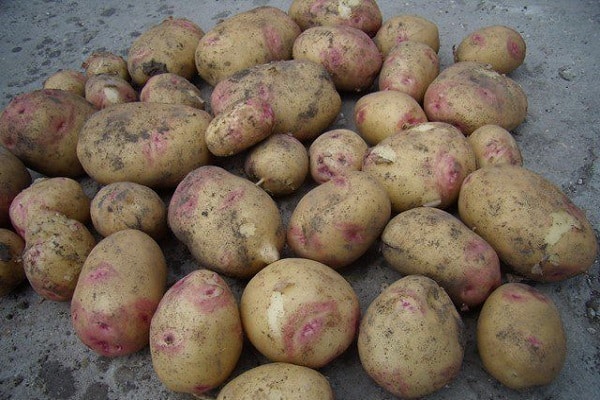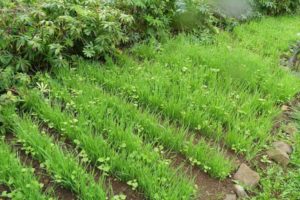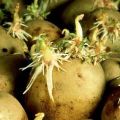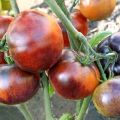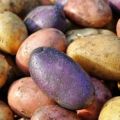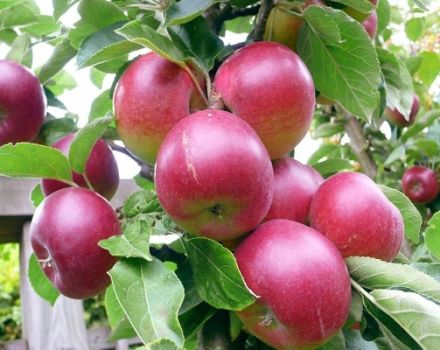Description of potato varieties Ivan da Marya and Ivan da Shura, cultivation and yield
Breeders from different countries have long been working on developing new types of vegetable crops, compiling a detailed description of the variety obtained by crossing. Potatoes Ivan da Marya began to be planted in Russia back in the 80s of the last century. In many regions, this variety was given its own names - Ryabukha, Matryoshka, Little Red Riding Hood, Lisa. The root crop was brought to the Soviet Union during the Gorbachev perestroika and was included in the Russian register of selection achievements as Picasso.
Description of the variety
Ivan da Marya grows on any land, but gives preference to light soils with low acidity. The potatoes owe their beautiful Russian names to their external characteristics. A late ripening variety has tall erect bushes, under each of which up to 20 tubers are tied:
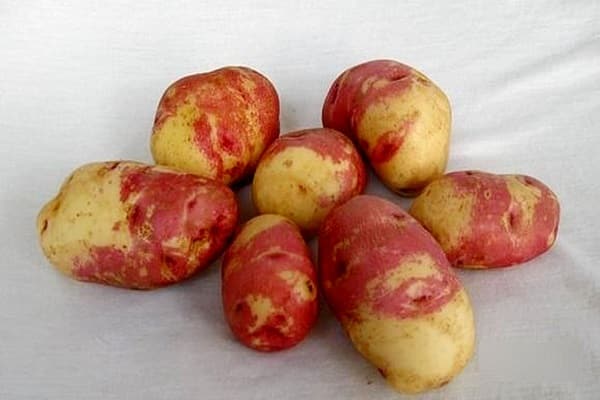
- elongated shape;
- with yellow skin;
- with spots of pink color;
- with small eyes.
One potato weighs about 100 grams, there is almost 16 percent starch in the pulp. It contains many vitamins, trace elements in the form of iron, calcium, magnesium, selenium, potassium. The tuber contains a little less than 80 kcal. The root vegetable has a pleasant taste, it is boiled during heat treatment.
The plant is not affected:
- potato crayfish;
- nematodes;
- verticillary wilting.
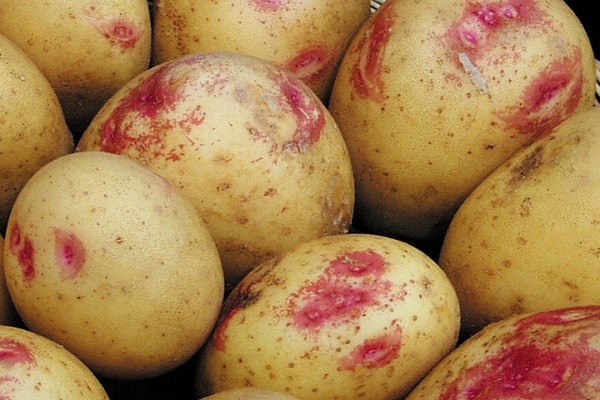
More than 300 centners of potatoes are dug out from one hectare in different regions of Russia. Root crops ripen, 110–135 days after the sprouts emerge. The ripening period is influenced by:
- soil features;
- weather;
- agricultural technology.
As follows from the description, Ivan da Marya potatoes tolerate drought normally, the tubers are perfectly stored until the next harvest, they are used fried, boiled, baked, they are used for making soups, borscht, casseroles.
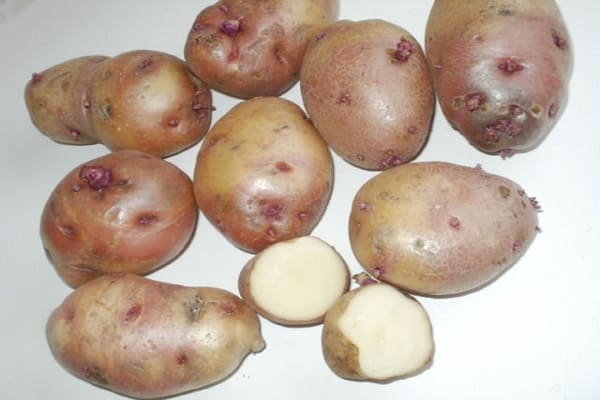
Flowers of the Ivan da Marya variety do not gather in a brush, have a white tint, and shimmer with a lilac color. Smooth, attractive tubers are quickly sold out on the market, they lie in the cellar until spring.
Gardeners and farmers are happy to grow Ivan da Shura, a variety that was bred by Kaluga breeders. Root crops of this variety ripen earlier than 4 months after the sprouts emerge. From 15 to 20 even oval tubers are dug from the bush. White pulp contains up to 17% starch, contains amino acids and vitamins.
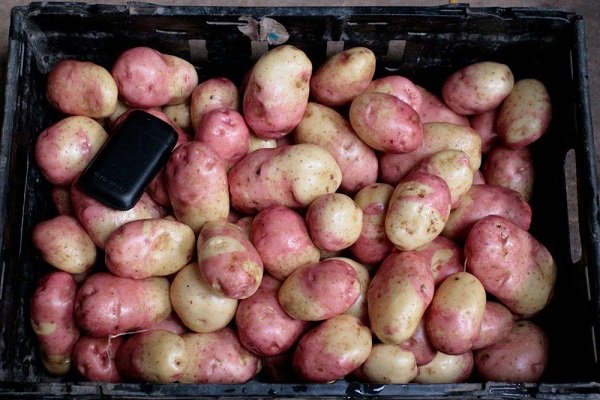
The advantages of the variety include:
- yield over 750 kg ha;
- rapid maturation;
- delicate taste.
Boiled potatoes are used to prepare various dishes. The culture is resistant to the main diseases of the nightshade, not afraid of drought, but demanding on soil fertility.
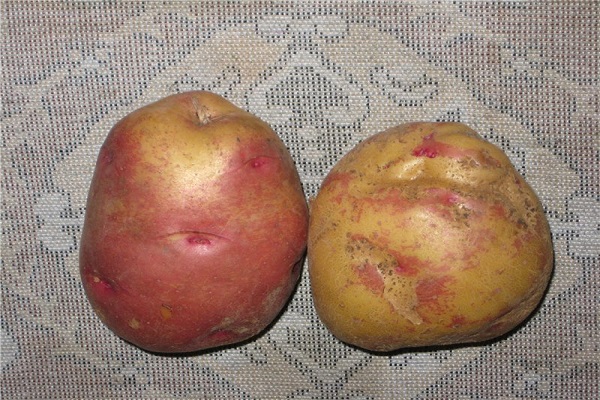
Growing
Farmers plant Ivan da Marya potatoes in order to profit from the sale, summer residents prepare various dishes from it. Observance of the rules of agricultural technology, careful care of the crop helps to harvest an excellent harvest.
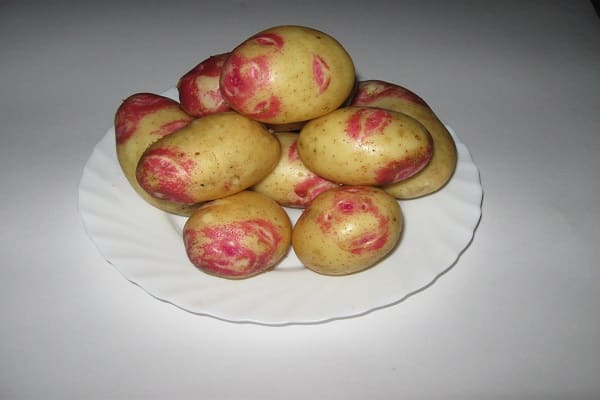
Preparing a place for a garden
Potatoes are grown both on loams, and on sandy soils, and on fertile chernozems, and on podzolic soils. The best predecessors for culture are:
- legumes;
- wheat and rye;
- beet.
Since autumn, having collected the harvest, the tops and weeds are removed on the site for potatoes. Manure and humus are spread evenly over the ground. In the spring they dig up the soil, break the lumps with a rake. Tubers are planted starting from the end of April, when the soil warms up. The place for the Ivan da Marya variety needs to be changed regularly.

Germinating seeds
From root crops dug in the fall, choose potatoes of the same size without spots and damage up to 5 cm in diameter. To prepare for landing:
- Tubers are laid out for 2 weeks on a warm veranda or in a room.
- Root vegetables can be folded into a basket with their eyes up, sprinkled with wet peat or sawdust, and left in the container for 15 days.
- The potatoes are sent to a room where it is dry and the temperature is at least 15.
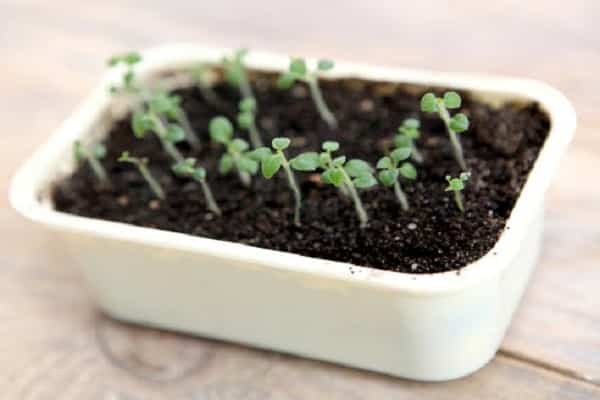
The finished seed is treated with potassium permanganate or by mixing a quarter glass of boric acid and 10 g of copper sulfate in a bucket of water. Ash helps to protect tubers from diseases. A kilogram of this substance is dissolved in 10 liters of liquid and potatoes are placed in it for half an hour.
Now many companies produce special drugs that prevent the development of pests - Prestige, Force, Cruiser.
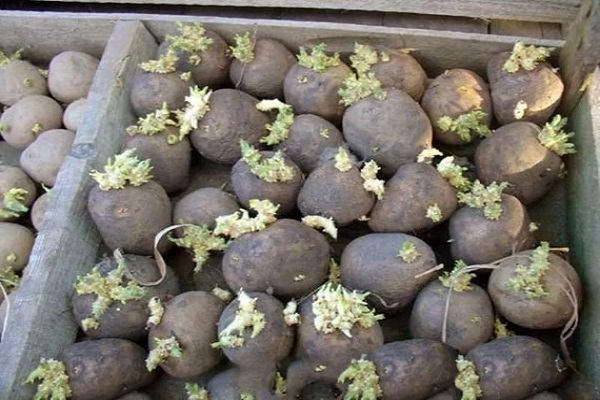
Planting methods
Most summer residents and gardeners dig holes, leaving 30 cm between them. A little ash and humus is placed in each hole, then a sprouted root crop is placed, and soil is poured.
The owners of suburban areas, where there are irregularities in the relief, are switching to a no-till planting method. The bed is divided into wide strips, transverse lines are marked at a distance of a meter. Tubers are placed every 20 cm, the holes are covered with soil from the rows.
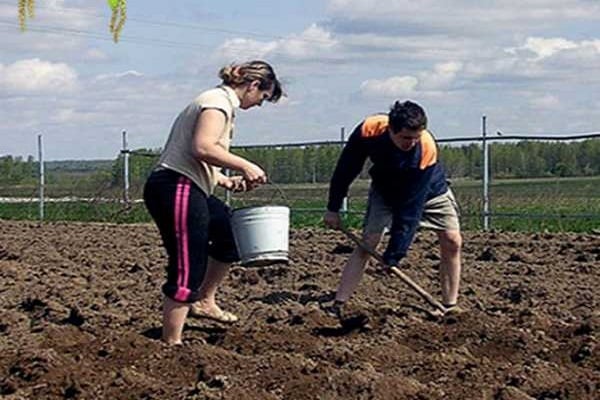
Some gardeners claim that they get a higher yield when potatoes are grown under straw, because when it starts to rot, earthworms creep in, contributing to the formation of vermicompost. The planting process includes:
- Loosening the soil, removing lumps, watering abundantly.
- Placing tubers in trenches every 30 cm.
- Covering the holes with a half-meter layer of straw.
With this method of agricultural technology, the bushes do not need hilling and moistening. There is no need to fertilize the ground.

Care features
Despite the fact that both potato varieties are undemanding to the soil, air will be needed for the development of tubers. A week after planting the seed, the soil begins to loosen and weed from weeds. When the stems rise 20 cm, they begin to hilling the beds. Do this work after rain or watering.
If there is a risk of frost return, the sprouts are immediately covered with earth from the rows, forming a small mound near them. Even at a temperature of minus 1 °, the leaves turn black and die. Potato yield decreases sharply. Hilling is started again after 3 weeks.
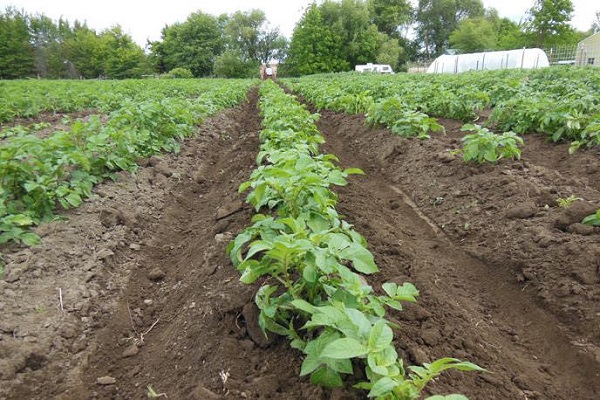
Top dressing and watering
In order for the root crops to form better, a month after the sprouts emerge, a complex fertilizer is applied, which is obtained by mixing half a liter of mullein or bird droppings and 2 tablespoons of urea in a bucket of water. When buds appear, they start feeding the roots with ash and potassium sulfate.
During and after flowering, a solution made from nitrophoska and superphosphate is applied under each potato bush.
With a lack of moisture, the tops wither, the leaves dry up, and the tubers become smaller. The beds are abundantly watered in the absence of rain for a long time, which has recently become a frequent occurrence.Water can be poured into the grooves between the rows, or a drip irrigation system can be installed. In the middle lane, 3 waterings are usually enough, this must be done during the flowering period.

Advantages and disadvantages
Potatoes of the Ivan da Marya variety are not afraid of drought, are rarely affected by viruses, and are resistant to nematodes. Farmers appreciate it for its excellent transportability, high marketability and yield. Beautiful oblong tubers boil soft, have a delicate taste, are suitable for cooking and frying, making soups and salads. A serious drawback of the variety is that it regenerates quickly.
Ivan da Shura potatoes ripen earlier, so the leaves do not suffer from fusarium. Its advantages include:
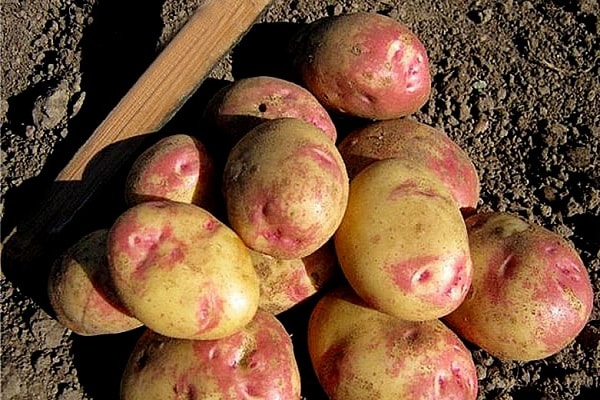
- resistance to drought and high temperatures;
- long-term storage;
- stable yield;
- a powerful root system.
About 20 nutritious tubers of pleasant taste with a high starch content are dug from the bush. Unlike Ivan da Marya, this potato does not degenerate. On one site, it is planted for several years, collecting large roots.
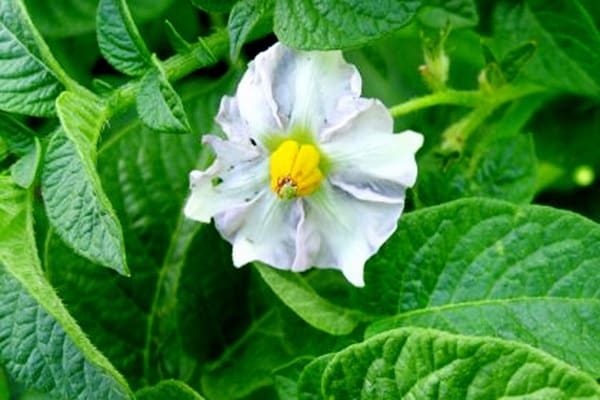
Pests and diseases
Ivan da Shura does not suffer from Alternaria, which is carried by various insects, is not affected by viruses and potato cancer. The variety develops resistance to late blight if tubers are sprayed with preparations containing copper before planting.
To prevent the development of root rot helps:
- moderate watering;
- hilling bushes;
- ash introduction.
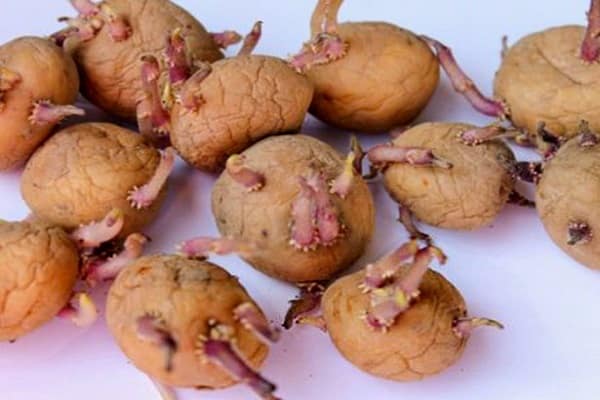
Young potato leaves are to the liking of spider mites, aphids. The Colorado potato beetle loves them, from which they are saved by biological agents and insecticides.
The Ivan da Marya variety is rarely affected by viruses, potato cancer, however, damp and cold weather contributes to the development of fungal diseases. With late blight, the tops are covered with brown spots, which are transferred to the root crops.
Potatoes Ivan da Marya suffers from silver and common aphids, from rolling leaves. To exclude the danger of plant damage allows prevention, which includes:
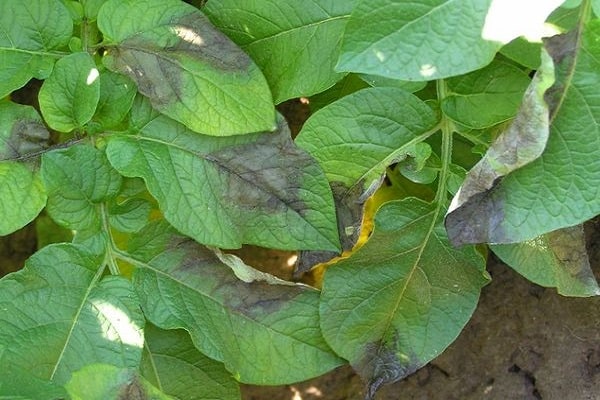
- planting healthy tubers;
- seed processing;
- weed removal.
You cannot grow this variety in one place for several years in a row. When signs of late blight appear on potatoes, 25 g of Agat-25 are dissolved in a bucket of water and the beds are sprayed at least 2 times. Prevents leaf rolling by fertilizing with fertilizers containing potassium.
To combat scab, the bushes are treated with insecticides such as Antrakol, Champion. To prevent the disease, the tubers are placed in a solution of copper sulfate or boric acid before planting.
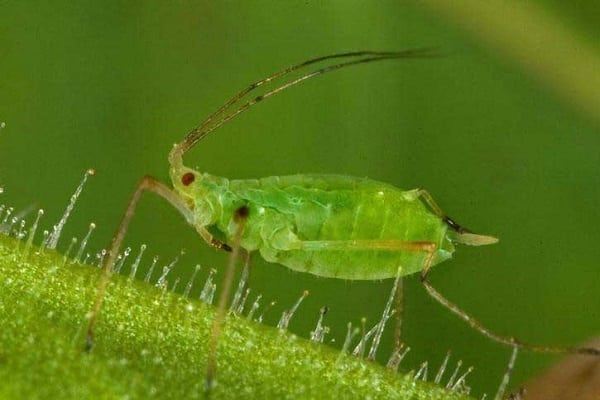
So that nematodes do not take a fancy to the garden, Bazamid is scattered on the ground. A harmless-looking striped insect inflicts great harm on potatoes. To destroy the Colorado potato beetle, many preparations are made, which have to be constantly changed, since arthropods quickly get used to it. The most effective insecticides include Intavir, Karate, Arrivo, Mospilan, Regent.
Some summer residents are fighting the formidable pest of potatoes with biological methods. To do this, plant garlic between rows, sow marigolds and calendula, spray the leaves with an infusion of wormwood.
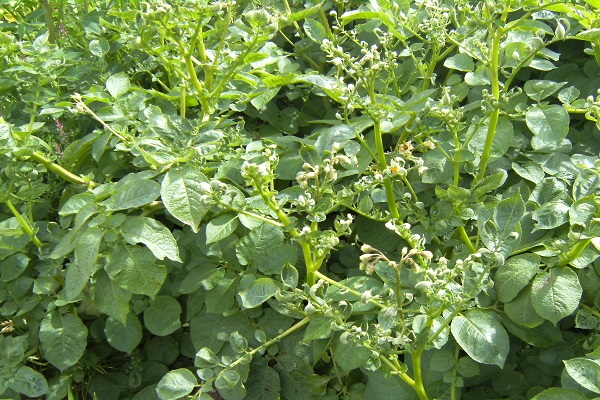
Harvesting and storage
Potatoes Ivan da Marya begin to dig up, 4 months after the sprouts emerge, when the tops dries up. Tubers with dents, cuts are used immediately and are not placed in the basement.
Root crops can be sprayed with copper sulfate before laying for long-term storage. Potatoes do not rot, do not lose their taste at 2-4 degrees of heat. The tubers will lie until the next harvest if they are placed in boxes, shifting with dry leaves of wormwood or elderberry.
Ivan da Shura digs up potato roots a couple of weeks earlier. They have excellent keeping quality and are stored until early summer.
